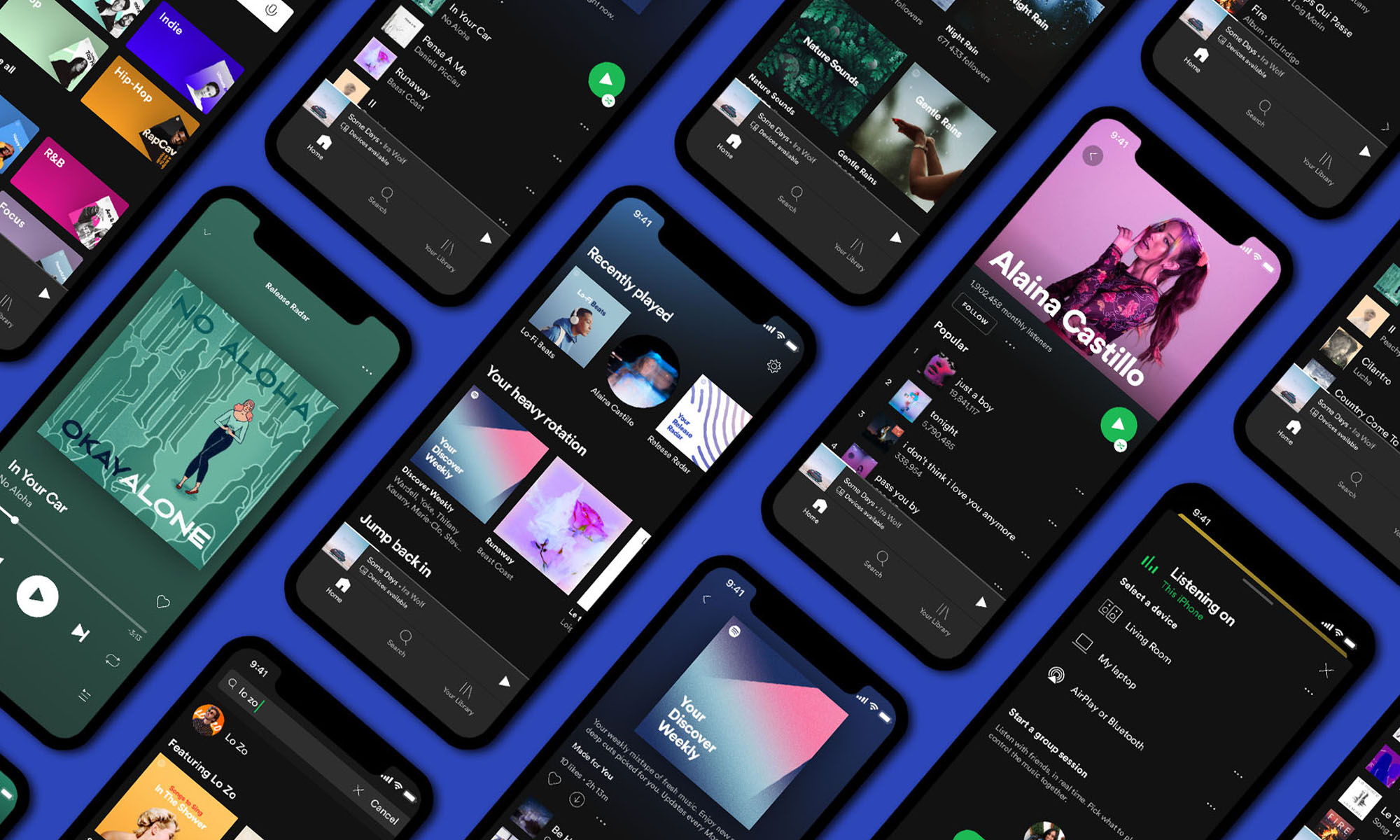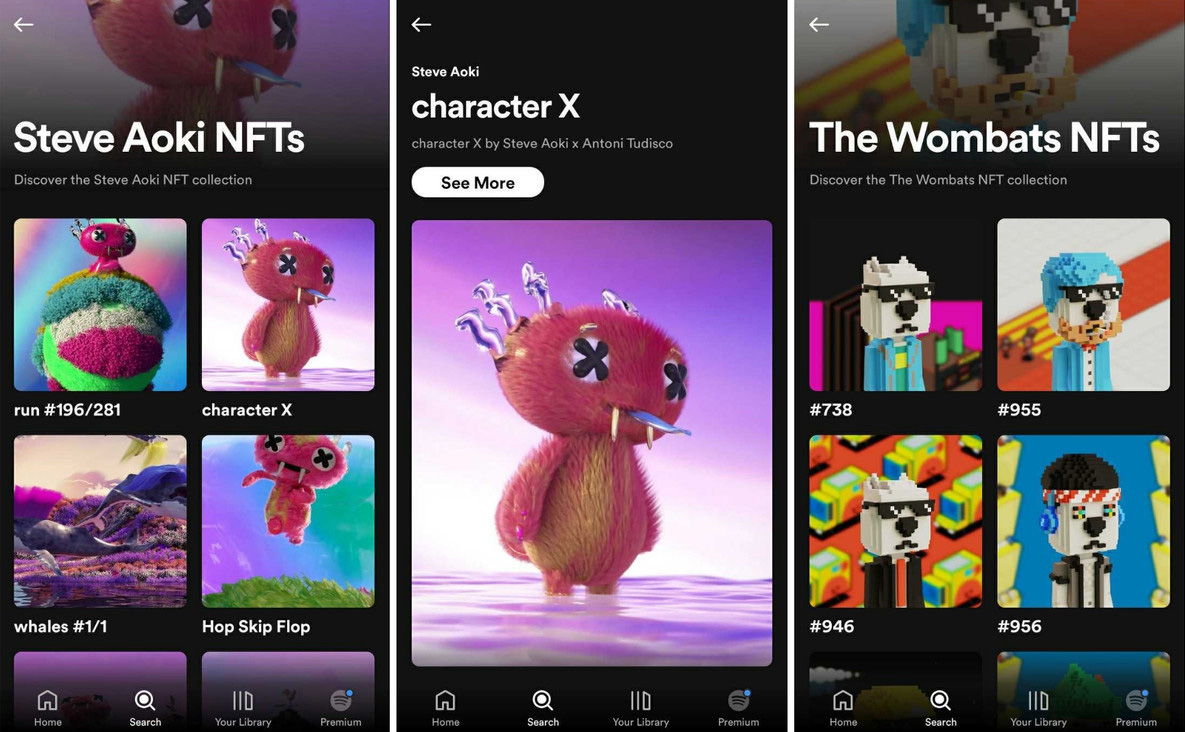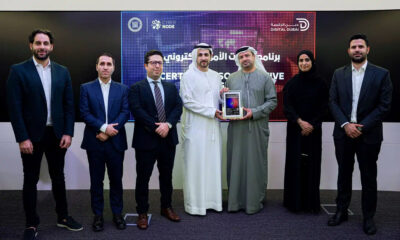News
Spotify Is Experimenting With Artist NFT Collections
According to a recent survey, it seems that the currently tested NFT collections are just the first step toward a much broader implementation of NFTs into the platform.

NFT sales may have declined by 92 percent since September 2021, but that’s not stopping Spotify from experimenting with a new feature that lets artists display their non-fungible token (NFT) collections on the music streaming platform.
At the moment, only a small group of artists are taking part in the experiment, including Steve Aoki and The Wombats. What’s more, only select US users of the Spotify app for Android can see NFTs when they visit the profile pages of the aforementioned artists.

“Spotify is running a test in which it will help a small group of artists promote their existing third-party NFT offerings via their artist profiles,” said Spotify spokesperson. “We routinely conduct a number of tests in an effort to improve artist and fan experiences.”
It’s important to point out that not all Spotify experiments result in new features. It all depends on the feedback the music streaming platform receives from users.
According to a survey some Spotify users have recently received, it seems that the currently tested NFT collections are just the first step toward a much broader implementation of NFTs into the platform. More specifically, Spotify seems to be thinking about allowing its users to directly purchase NFT art to support their favorite artists.
Also Read: 3 Best Cold Storage Wallets For Crypto In 2023
Considering how polarizing NFTs have been since their inception in 2014, it shouldn’t come as a surprise that many Spotify users have immediately expressed their dissatisfaction with the idea of NFTs becoming part of the Spotify music listening experience.
Other large tech companies are also experimenting with NFTs. Instagram, for example, started testing NFT integration last week, allowing NFT creators and collectors to display their tokens on the platform. Mark Zuckerberg himself believes that NFTs and digital collectibles in general will play an integral role in the metaverse, the new iteration of the internet.
News
Mamo Completes $3.4M Funding Round To Enhance Fintech Services
The startup will use the influx of cash to expand into Saudi Arabia and across the wider GCC while improving its product offering.

UAE-based fintech Mamo has announced the completion of a $3.4 million funding round that will help the startup extend its market presence and improve its product offering. Investors included 4DX Ventures, the Dubai Future District Fund and Cyfr Capital.
Mamo’s platform offers “payment collection, corporate cards and expense management” to help small and medium-sized businesses consolidate and streamline their operations. With the latest influx of capital, Mamo will further develop its comprehensive suite of services and begin testing its product lines in Saudi Arabia, further extending its footprint across the GCC.
Imad Gharazeddine, co-founder and CEO of Mamo, stated: “We’ve been in the market for a while now and are incredibly proud of what our team has achieved. The holistic and expansive nature of our product offering has helped us continue to grow sustainably. This additional funding will allow us to reach our medium-term goals even faster. The support from new and existing investors is a testament to our strong expertise and the ability to deliver on our customer promise”.
Daniel Marlo, General Partner of lead investor 4DX Ventures, added: “We have immense trust in Imad’s vision, leadership and Mamo’s innovative approach to provide a user-friendly and comprehensive financial solution for SMEs that makes financial management more accessible and efficient. We are proud to partner with them and support their mission”.
Also Read: A Guide To Digital Payment Methods In The Middle East
Amer Fatayer, Managing Director of Dubai Future District Fund’s investment team, also commented: “Mamo’s localized product lines serve as an infrastructure for SME payments and spend management in UAE, a segment that is underserved by the country’s current banking infrastructure. The team has taken a product-first approach to consolidating SMEs’ financial journeys and building a fintech solution deeply embedded in a business’s core operations”.
To date, Mamo has raised around $13 million in investment funding and now boasts a team of 30 people. The company’s intuitive financial services platform has allowed over 1,000 businesses to consolidate their financial operations and significantly reduce payment fees.
-

 News4 weeks ago
News4 weeks agoAmazon Prime Day 2024: Get Ready For 6 Days Of Amazing Deals
-

 News4 weeks ago
News4 weeks agoSamsung Unpacked 2024: What To Expect From The July 10 Event
-

 News4 weeks ago
News4 weeks agoCoursera Report Shows Surge In UAE Interest In AI Upskilling
-

 News4 weeks ago
News4 weeks agoMeet Dubai’s Groundbreaking Smart Robot Delivery Assistant
















